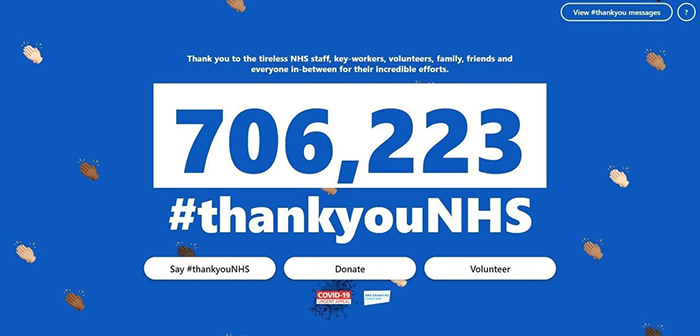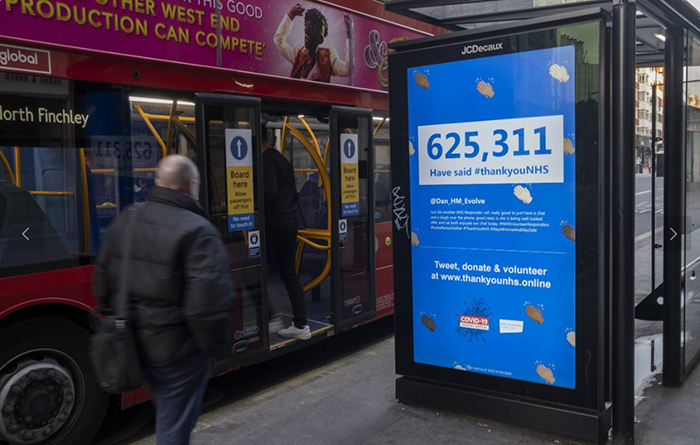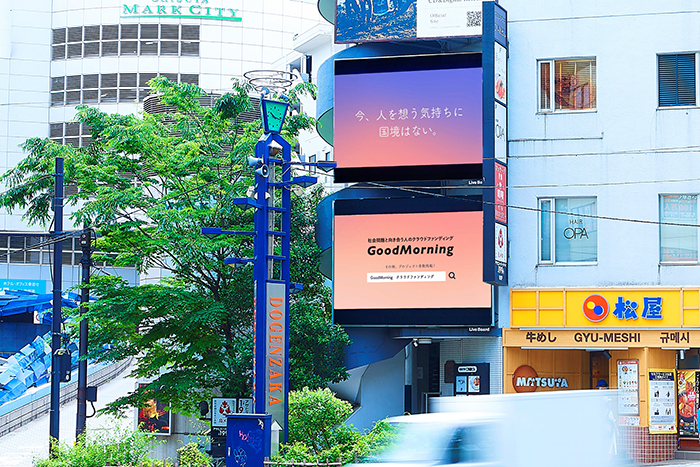Out-of-home advertising (OOH), which has long added vibrant color to cityscapes worldwide, is disappearing. This is due to the spread of the novel coronavirus, which has restricted movement and drastically altered people's behavior.
I am currently seconded to Posterscope, a UK-based company specializing in OOH within Dentsu Inc. Aegis Network (DAN), where I handle the buying and selling of global OOH media. Amidst these challenges, Posterscope has pioneered new approaches to utilizing OOH media. This article introduces these innovative uses of OOH media alongside concrete examples.
OOH Advertising: From Steady Growth to Significant Impact by the Pandemic
Over the past few years, a global trend saw advertisers placing exceptionally high expectations on OOH advertising. Walking through the streets of the UK, one could see a wide range of advertisers utilizing OOH, including beverage and confectionery brands (common sights in Japan too), financial institutions, and internet startups.
With forecasts predicting continued passenger growth centered around Heathrow Airport, a European hub, and unabated population concentration in urban areas (London), OOH advertising in the UK was also evaluated as a medium poised for sustained upward growth.
Indeed, UK OOH advertising revenue grew from approximately ¥120 billion in 2010 to about ¥178 billion in 2019, marking a 1.5-fold increase over the decade.
However, the spread of the coronavirus drastically changed this positive situation. Restrictions on movement (principally prohibiting non-essential outings for non-medical personnel) and the suspension of urban functions (business closures except for pharmacies and supermarkets) led to a sharp decline in traffic volume.
Many businesses holding location data, primarily telecom carriers, reported traffic volume during lockdown fell by 70% to 80%. Even after lockdown easing, traffic is not expected to exceed previous year levels. As this data spreads, OOH media finds itself in a difficult position.
In the UK, within about a week after the lockdown was announced, many scheduled OOH ad placements were canceled. The vacant spaces began displaying government announcements.
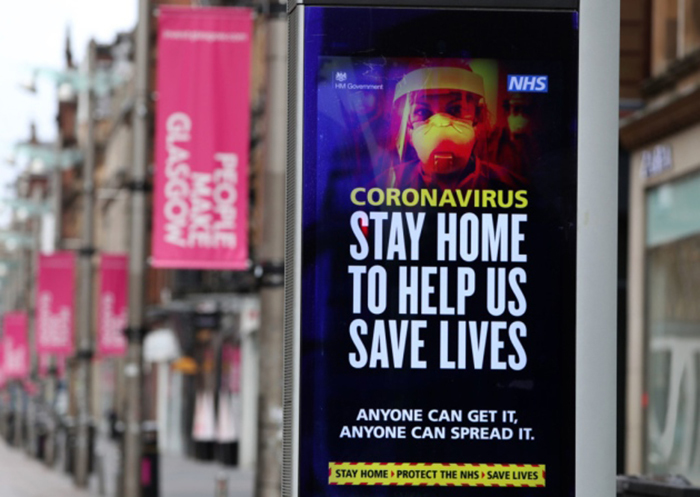
Posterscope is challenging itself with a new initiative: using OOH advertising as a medium to "amplify individual voices," aiming to break through this situation.
A new application for OOH advertising: connecting with society and visualizing individual voices
Traditionally, OOH advertising has been valued for its forced visibility, targeting commuters, students, travelers, and others, and has been widely used by many companies and brands.
As corporate advertising spending declines, Posterscope began exploring whether OOH advertising—installed in living spaces like streets and stations, and thus close to people's daily lives—could be leveraged not just by companies, but also by individuals. Here are two examples from the UK that emerged from this thinking.
Case 1: Messages of Support for Healthcare Workers
This OOH campaign, executed by Posterscope and mcgarrybowen (a creative brand of DAN), utilized local photographers. Professional photographers captured messages of gratitude from children addressed to local healthcare workers, which were then displayed on OOH media in areas with high concentrations of medical facilities. To support healthcare workers, media companies provided the advertising space free of charge, making the children's voices visible.
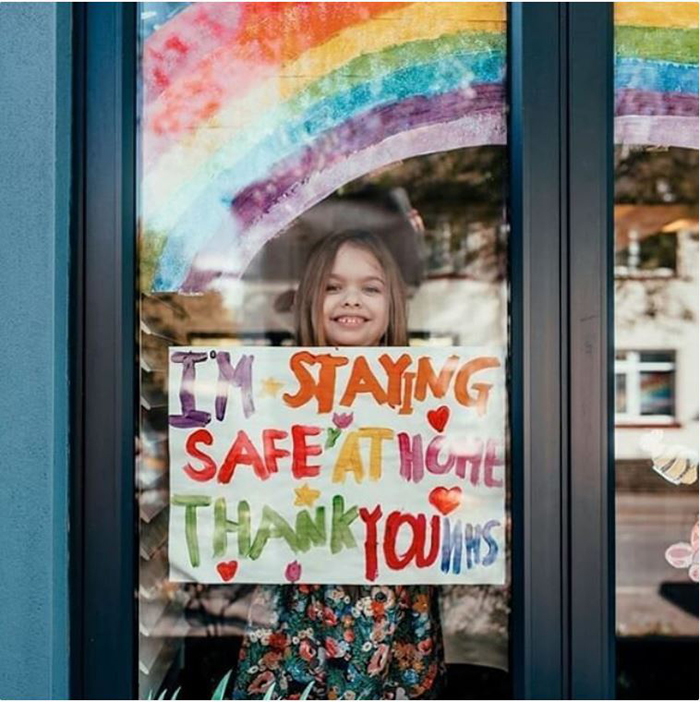
Messages from children photographed by professional photographers outside their homes

Messages from children photographed and displayed along healthcare workers' commutes
This movement to visualize individual voices has already begun in Japan, not just the UK. LIVE BOARD, a digital OOH (DOOH) media company, has partnered with the crowdfunding platform GoodMorning to support projects raising funds for people, organizations, and services affected by COVID-19 through its own media.
These examples hint at new possibilities for OOH media.
That is,
"OOH advertising, which has connected brands and products with consumers, can now be utilized as a platform to amplify the voices of individuals and specific communities (fans and local areas)."
.
By visualizing the voices of people who want to take action—such as online communities, artist fans, or local sports clubs—through platforms like crowdfunding and social media, and then exposing them offline via OOH media, you can appeal to a broad, unspecified audience. This activity can then be shared again online through social media.
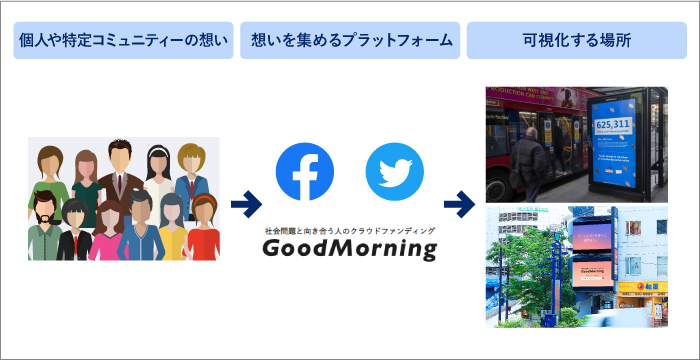
We gather individual voices onto a platform and deliver them to consumers.
Currently, when looking at SNS posts related to OOH advertising, we see voices like: "The city feels lifeless with fewer outdoor and train ads," or "It feels like the economy has stopped, which is worrying." We believe that utilizing OOH advertising as a place to express not only corporate but also individual voices can contribute to restoring the city's vibrancy and brightness.




